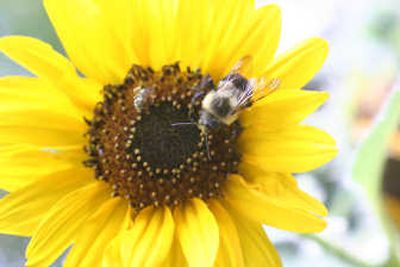Tips to minimize exposure to pollen

Many gardeners suffer from pollen allergies, which lead to sneezing, runny noses, watering eyes and sinus-pressure headaches while working outside when pollen counts are high.
Continual exposure to hundreds of airborne pollens can turn a relaxing outdoor hobby into a sneeze-filled experience. Allergy sufferers, however, can use some simple tips to minimize their exposure to pollen. Also, gardeners can avoid and eliminate troublesome pollen-producing plants to reduce airborne pollen.
Wind-pollinated plants produce pollen grains light enough to drift in the wind. The goal is for the pollen (the male sexual cells) to blow around and eventually land on the female organs of flowers, pollinate them and produce seeds. Wind-pollinated plants are characterized by drab, inconspicuous flowers that appear in clusters, tassels or catkins. You hardly notice the flowers of wind-pollinated plants. Since they don’t have to attract pollinators such as insects, birds or bats, they don’t waste effort producing colorful petals or fragrances.
Allergy problems result from these tiny pollen particles, which are easily inhaled. Many shade trees, such as oak, maple, ash, pecan and birch, are wind-pollinated. Other wind-pollinated plants include grasses, ragweed and junipers.
The good news is that the plants with colorful flowers that we favor for our gardens produce less of the pollen associated with allergies. Since these plants are insect-pollinated, their sticky pollen is designed to adhere to the legs and bodies of insects and is too heavy to be carried by the wind. Because the pollen does not become airborne, it is rare for insect-pollinated plants to cause a reaction in allergic individuals, unless they stick their noses in flowers.
Sometimes an attractive flowering plant gets blamed for allergic reactions that actually are brought on by a wind-pollinated plant. Goldenrod and ragweed, for example, bloom at the same time. Goldenrod produces showy, golden-yellow flowers that are pollinated by insects, so goldenrod pollen does not become airborne. Ragweed is wind-pollinated and causes allergies in many people. However, because its flowers are inconspicuous, you might never notice it blooming. Goldenrod, therefore, is often blamed for the hay fever that people suffer in late summer, even though ragweed is the real culprit.